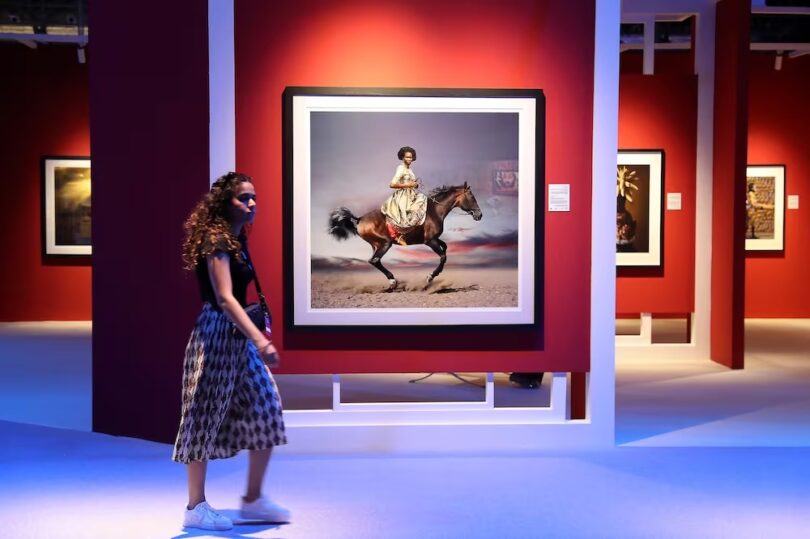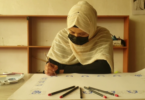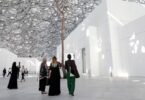Razmig Bedirian
For its eighth iteration, the Xposure International Photography Festival claimed it would hold its largest event to date. While the proclamation is heard for many events in the region, often meaning a marginal increase in participation, in the case of the annual photography festival, the expansion is certainly felt.
The event has grown almost twofold. Running until March 5, it sprawls across 33,000 square metres at the Expo Centre Sharjah. It features group and solo exhibitions, workshop spaces, multiple stages, a dedicated cinema, as well as a trade area, where top-level photography brands are offering their products at discounted prices.
Since its inception in 2016, Xposure has sought to give photographers their due. This is especially true for this edition, where the breadth of the medium, and its ability to reflect social and climate concerns, is most evident.
The festival has installations dedicated to journalists who have recently died while covering conflicts. “Their legacy is a ceaseless call for peace,” the concrete-cast installations read, displaying the names of the journalists alongside a call for a ceasefire in the Israel-Gaza war.
One of the photographers exhibiting is Rania Matar. She is presenting a series titled Where Do I Go? Fifty Years Later. The works in the series reflect upon the destruction and inertia that have gripped Lebanon in the wake of its civil war.

Matar travelled to the US from Lebanon in 1984, in the middle of the conflict. Among the memories she has before leaving is watching Beirut’s Holiday Inn hotel – built just a year before the war erupted in 1975 – burn. The dilapidated structure still stands today, its floors gutted and walls pockmarked by shelling and bullets.
Her photograph Petra, Holiday Inn Pool captures the building’s current state. A woman in a vibrant yellow dress stands on the blue-tiled floor of the hotel’s empty pool. The structure itself looms tragically in front of her.
“I saw it from my apartment as a kid,” she says. “The war had started, and I saw room by room burn. Almost 50 years later, and it’s still like that.”

Matar began the seriessoon after the port explosion in August 2020. One of the first photographs is Alae (with the Mirror). It features a young woman holding up a pocket mirror, but looking off into the distance, towards the crumbled port.
“I went to Lebanon in late September 2020, right after the port explosion,” Matar says. “I thought I was going to photograph the destruction and I realised that I was more fascinated with the women and the reconstruction. I photographed Alae a few times. We went to the top floor of my father-in-law’s building. The top floor had been destroyed since the civil war.”
“We went upstairs and saw the port. When Alae lifted the mirror, she wanted to look at herself originally, but she could [also see] the port.”
It was then that Matar began the series, seeing that Beirut was evidently ensnared in the throes of a destructive cycle. Many of the photographs feature landmark buildings that have become embedded within the Lebanese collective memory. Even for those like Matar’s subjects, almost all of whom were born after the war concluded, the structures hold a shadow of the conflict and ring with the symbolisms of Beirut’s inertia.
“I left Lebanon in 1984 to study architecture and there was a major wave of emigration,” she says. “And now after the port explosion, there was this other major wave of emigration. For me, I could almost see my younger self and those women, you know, so it kind of slowly developed into a project.”

Tamary Kudita, meanwhile, is presenting Liberty. The photographs in the series take their aesthetic cue from the portraits of the Dutch painter Rembrandt, enlivening them with clothing and cultural elements of Zimbabwe.
“I started the series in 2019,” Kudita says. “The National Gallery [in Zimbabwe] was hosting a competition to reinterpret one of Rembrandt’s works but applied to the local context.”
Kudita was inspired by Saskia as Flora, a 1634 painting that depicts Rembrandt’s wife as the goddess flora, with a garland in her hair and a staff in her right hand. Kudita reinterpreted the piece to feature a Zimbabwean woman also with a floral headdress, as well as a straw-woven sweeper. Kudita says she asked herself what it would be like “to place [a] black woman within mainstream art history.
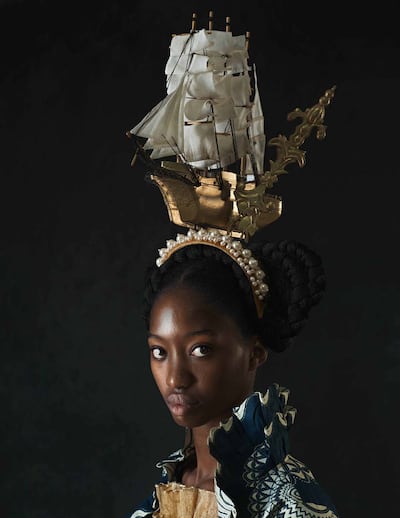
“Women often didn’t have that visibility that we that we deserve,” she says. The portrait emanates a regal energy, like many others in the series. “Even the royal aspects with the blue that she’s wearing, it adds layers of significance.” Liberty also reflects upon Kudita’s mixed heritage, which also incorporates South African and Dutch roots.
This is evident with the scenography that Kudita employs in her works, which blend motifs from various backgrounds. “It is done with bringing cultural objects together with fabric and also hairstyles, as hairstyles have a tradition of being undermined and overlooked.”
Xposure is also offering a platform to emerging names, many of whom are marking their first solo exhibition. These include Dhir Jakharia. Attracted to the landscape of the savannah since he was a child visiting the grassland during family holidays, the Kenyan-Indian photographer captures the mystery and splendour of the area across 12 photographs in his solo exhibition.
The works feature silhouettes of animals caught on layered, luminous landscapes. There is a sense of magical realism to Jakharia’s photographs, a play on perspective that makes it seem, for instance, like a giraffe is grazing on a hot-air balloon.
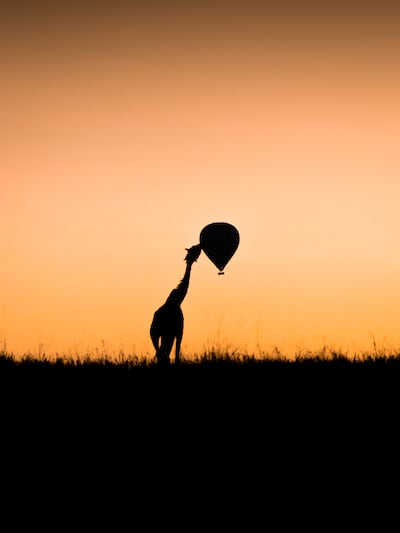
The 12 exhibited images are highlights of his works, a small fraction of what he has taken in the four years since he took up photography. There are a lot of factors that come into play when setting out to take a photograph that falls in line with his visual objective.
“There’s so many things that have to be perfect,” Jakharia says. “You might go out in the morning, and you’re anticipating the sunrise, but it’s cloudy, so you don’t get the sun. If the clouds are clear, you get a nice sunrise, but you have to find an animal after that. Then after finding the animal, you need to kind of position yourself above the horizon.”
Then there are photographers who reveal sidelined and brutal histories with their works. These include Daniella Zalcman. Her Signs of Identity is an ongoing photography series that highlights the stories of survivors in the US, Canada and Australia who were subjected to systematic and forced assimilation in a bid to erase their indigenous cultural roots.
Many of them were forcibly prised from their homes and sent off to boarding schools and foster care. Their names were changed, they were forbidden to practice their customs and speak their native languages, and even when they were allowed to return, their connection to their communities had been ruptured, often irreparably.

Zalcman says she first came across these systematic government-backed programmes a decade ago while she was interviewing indigenous people in Canada for an unrelated story. The US photographer was surprised that she had never learnt about it in school, that it wasn’t mentioned in their history textbooks. “I was both really angry and quite shocked that this thing had gone on for 120 years.”
“The last school in Canada did not close until 1996,” she says. “The US government actually invented the concept of the indigenous boarding school. That original school in Pennsylvania became the model on which all of the Canadian and other American schools were based. Indigenous children as young as two years old were forcibly taken from their communities and from their parents and were sent to boarding schools.”
Zalcman’s portraits are of survivors of these schools. The works contain the names of the subjects, as well as quotes about their experiences. Mike Pinay, for instance, who attended the Qu’Appelle Indian Residential School between 1953 and 1963, is quoted as saying: “It was the worst 10 years of my life. I was away from my family from the age of six to 16. How do you learn about family? I didn’t know what love was. We weren’t even known by names back them. I was a number. Pinay was known as 73.

The earlier photographs in the series are double-exposed works and interplay the portraits with elements and landscapes that touch upon their subject’s stories. The latter works involve collaborations with artists from indigenous communities who drew and embroidered over the photographs.
These include the portrait of Nixon Martinez, who was forced into the Ramah Elementary School between 1966 and 1973. “From day one, the government tried to do away with us,” he says in the caption of the work. “They shot our livestock, they burnt our crops. Then that didn’t work, so they went after our children.” The photograph and artwork is a collaboration between Zalcman and Mo Thunder.
Each of the 400 photographers exhibited at Xposure have their own way of using the medium to reveal tragic truths, touch upon social absurdities, or capture beautiful ephemeral moments with artistic insight. The festival, in its most ambitious iteration yet, has become a labyrinth of visuals that offers something profound and touching in every turn, offering an enriching experience that effortlessly distinguishes itself even amid the busy UAE arts season.
Courtesy: thenationalnews

